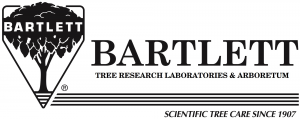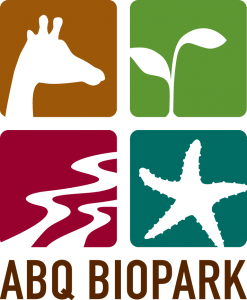Welcome to CPC: New Partners
At the core of the Center for Plant Conservation’s (CPC) work is our conservation community—people and organizations that support and contribute to our conservation mission and vision of a future where plants, people, and our planet thrive. These conservation practitioners and researchers, advisors and partners, donors, and plant enthusiasts help make our work possible, and we are thrilled at the ways in which our community has broadened and strengthened over our 40-year history—and continues to do so.
CPC is excited to welcome a new member to our Board of Trustees, Arabella Dane, as well as five new institutions to our network of Conservation Partners. Now 80 members strong, the CPC network brings together plant conservationists from world-class institutions across the globe and is grounded in the spirit of collaboration and scientific innovation to save imperiled plants from extinction. Read on to learn more about the newest members of our community!
Arabella Dane
CPC Board of Trustees | Milwaukee, WI
Passionate about conservation, native plants, and their pollinators and habitats, Arabella is currently serving as a board member of the Native Plant Trust and the Center for Plant Conservation. She has compiled a plant database of over 150,000 plants and is continually adding images of these plants and the butterflies and other pollinators that frequent them.
A National Garden Club Master Flower Show Judge, Master Landscape Critic, and Gardening Study Consultant, Arabella serves as a member of the National Garden Club’s Board. She has recently become a NH Master Gardener, volunteering through the extension service based at UNH. The recipient of the Garden Club of America’s 2020 Achievement Medal, she is a member of the North Shore GC in MA, the Ashland GC in NH, and more recently the Green Tree GC in Milwaukee. Her lectures and articles on photography and on conservation topics are popular with garden clubs and other groups.
She recently finished her term as chair of the Boston Committee of the GCA, an association of 9 GCA Clubs and 3 affiliated clubs that help worthy organizations to protect the open spaces in and around Boston, many of these properties are part of Olmsted’s Emerald Necklace. She is a Garden Club of America Flower show judge in Horticulture, Design, and Photography, and is the Photography Society of America individual membership director for New Hampshire.
The Dane’s Hillcrest Farm in Center Harbor, NH has been documented and accepted into the Archive of American Gardens at the Smithsonian. The property includes formal gardens, whimsical components, play areas, and farm animals in addition to a wild meadow and a stand of chestnut trees where pink lady-slippers grow with abandon. A photography instructor, a Photography Society of America judge, and member of several photography organizations and camera clubs, Arabella gives programs in person and via Zoom. She has competed successful in numerous international competitions. Enjoy some of her images here.

Bartlett Tree Research Laboratories and Arboretum
Collaborating Partner | Charlotte, NC
Bartlett Tree Research Laboratories and Arboretum is a 60-year-old collection of almost 30,000 accessions of woody and perennial plants with an increasing conservation focus. Funded by their parent for-profit company, Bartlett Tree Experts, the arboretum serves to house both collections of conservation priorities as well as research collections for the fields of botany, horticulture, arboriculture, and similar interests. Botanical research is a new realm Bartlett is rapidly expanding into, utilizing their molecular lab on site that is also used for diagnostic purposes within the company. They collaborate with botanic gardens, universities, nurseries and other stakeholders in the botanical and horticultural realms and are spearheading the much-needed Global Conservation Consortium for Crataegus, which has become a priority genus for Bartlett as they build up a living reference collection with the goal to spark further research into this genus.

City of Albuquerque BioPark
Participating Institution | Albuquerque, New Mexico
The ABQ BioPark is a living environmental park that protects the natural world and connects communities with nature with the mission of fostering meaningful connections between people and nature. It is a refuge for thousands of animals and plants cared for by zoological, marine and botanical experts who lead significant science-based conservation work in New Mexico and around the world. The BioPark consists of four distinct areas: ABQ BioPark Aquarium, ABQ BioPark Botanic Garden, ABQ BioPark Zoo, and Tingley Beach. It is an Association of Zoos and Aquariums accredited, accessible facility that has earned the American Humane Certified™ seal of approval for its excellent treatment of animals and commitment to conservation. Welcoming more than 1.5 million visitors per year, ABQ. BioPark is the top tourist destination in the state of New Mexico.
The ABQ BioPark Botanic Garden collections include ornamental and native plants designed in garden-theme plant communities. These gardens include a children’s garden, a desert and tropical conservatory, an orchid collection, a desert-adapted Japanese garden, a medicinal plant garden, a high desert rose garden, and a heritage farm. ABQ BioPark maintains collections of many rare plant species and a seed bank.

Oregon Department of Agriculture – Native Plant Conservation Program
Network Partner | Salem, Oregon
The Oregon Department of Agriculture’s Native Plant Conservation Program oversees the conservation and management of Oregon’s listed plant species, including: assisting federal, state, and local government agencies with the management of state protected plant populations found on their land, including consultations for impacts to listed species and development of management plans and conservation programs; issuing permits for scientific research and habitat restoration projects involving listed plants; conducting research to enhance protected plant species recovery efforts; and periodically reviewing listed species and candidate species for potential reclassification, removal, or addition to the State’s list of threatened and endangered plants. The NPCP is involved in many conservation projects throughout the state, and assists land managers with listed plant species on their properties and works to support recovery goals for Oregon’s listed species.

The Jones Center at Ichauway
Participating Institution | Newton Georgia
The Jones Center at Ichauway was founded in 1992 with a mission to understand, demonstrate, and promote excellence in natural resource management and conservation. Within the Jones Center, the Plant Ecology lab focuses on understanding and conserving the floristic diversity of the southeastern Coastal Plain through long-term studies and rare plant monitoring and seed collections. The Jones Center maintains a seed bank of more than 1,000 accessions of 68 species, the majority of which are S1-S3 species in Georgia and has a shadehouse bay dedicated to rare species propagation and with raised beds for living collections. As the Plant Ecology lab continues surveying for, monitoring, and collecting seeds from rare species throughout southwest Georgia, the Jones Center also looks forward to the opportunity to work with the Florida Plant Rescue program and become an ex situ site for rare plants from northwest Florida.
University of South Florida Botanical Gardens
Participating Institution | Tampa, Florida
The mission of the Botanical Gardens at University of South Florida is to foster appreciation, understanding and stewardship of our natural and cultural botanical heritage through living plant collections, displays, education and research. The Botanical Gardens serve the education and research needs of the University community and provides education and recreation opportunities to the Tampa Bay Area community.
The USF Botanical Gardens is committed to the conservation and education about Florida’s native plants and plant communities. They currently have approximately 200 species of native woody plants in their collections, a native wildflower/grass “meadow” comprised of more than 100 herbaceous species, a Florida scrub planting with approximately 30 species of scrub and sandhill species, and a littoral zone planting with more than 30 species of woody and herbaceous plants. USF Botanical Gardens currently has 54 plant species in their public collection that are state and/or federally listed, including 10 scrub species and four pine rockland species. USF Botanical Gardens intends to be a major source of education regarding Florida native plants, their conservation needs and their use in home landscapes to create habitat for wildlife.
